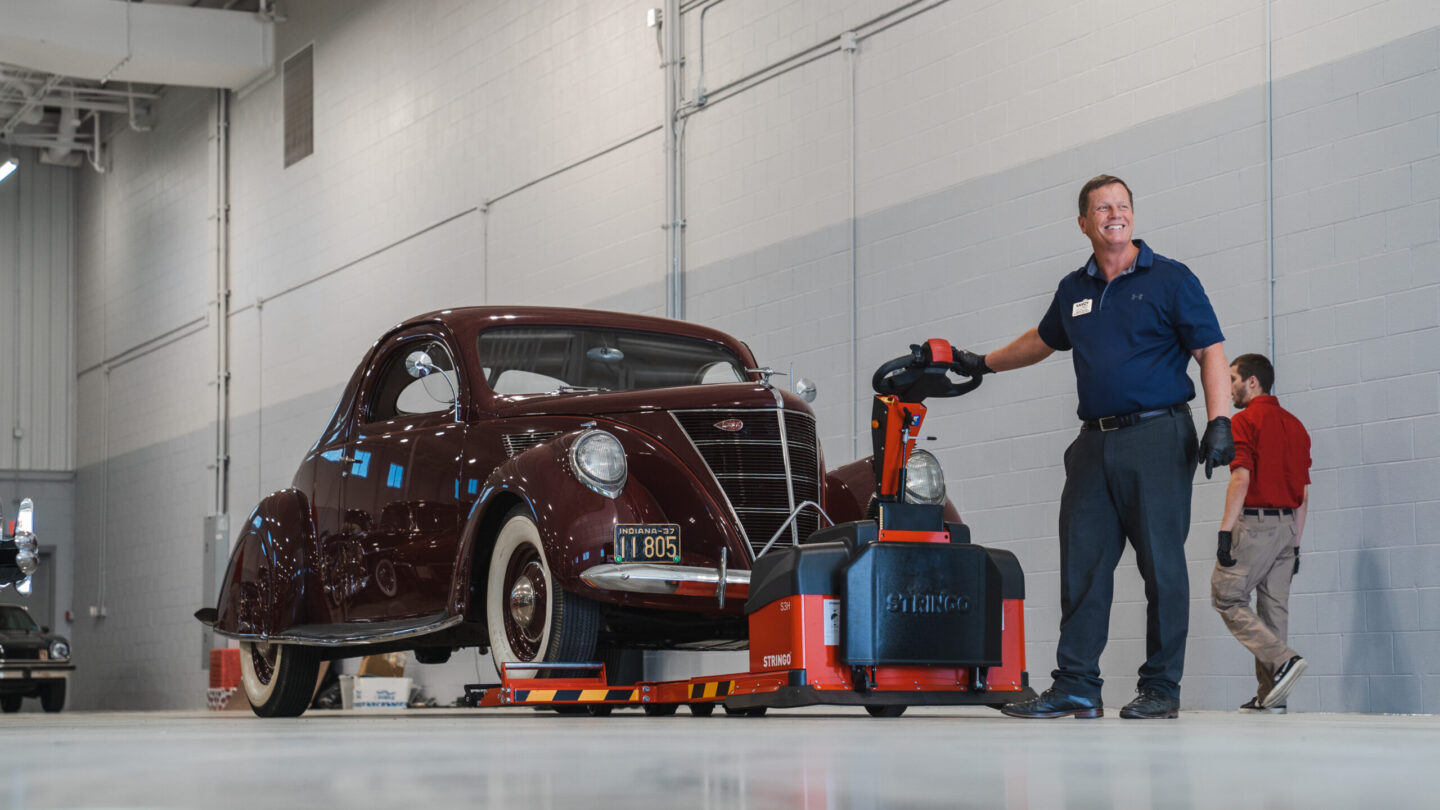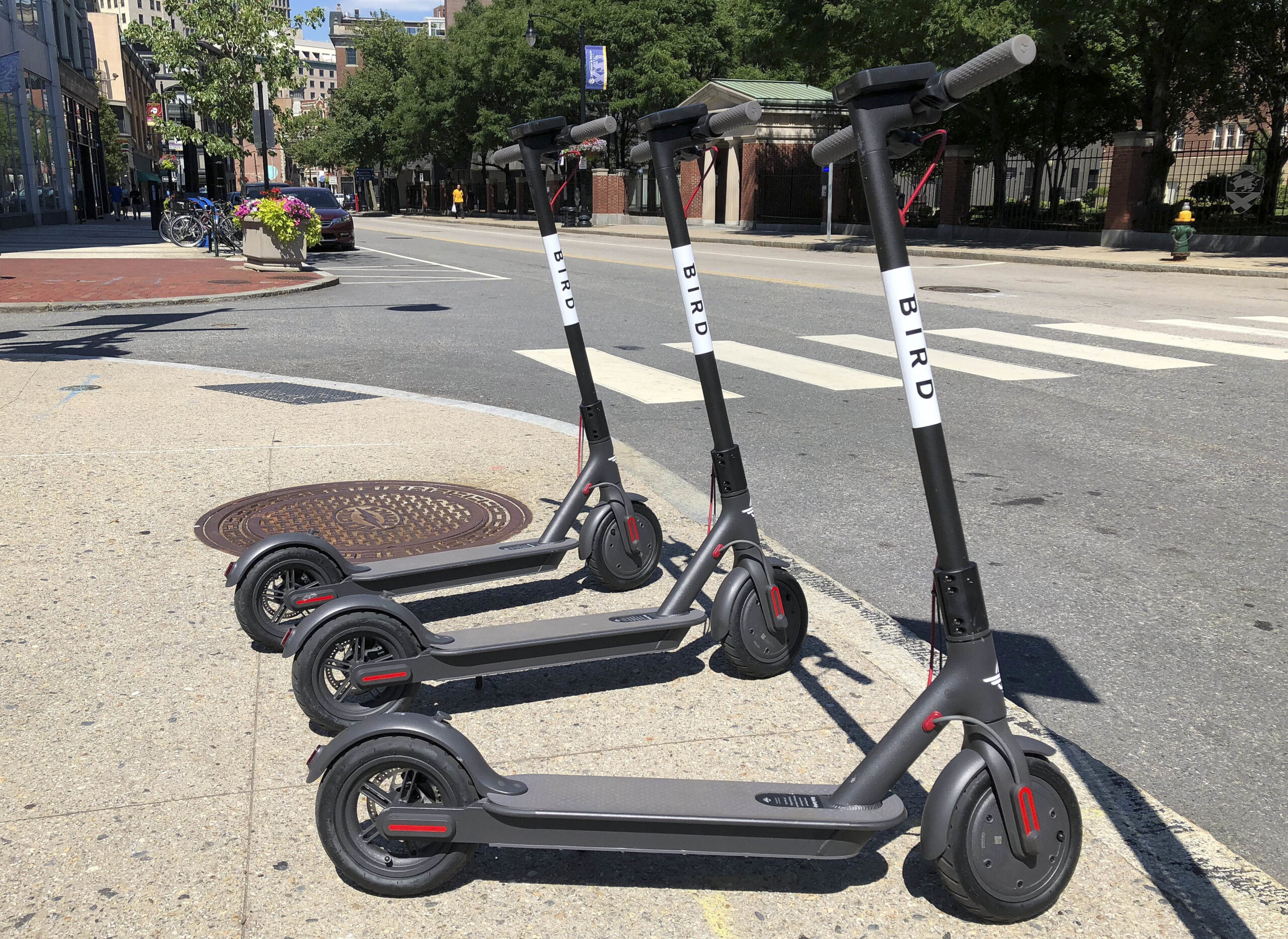Nostalgic depictions of America in the 1950s and ’60s often feature the iconic look of classic cars with extravagant tailfins, chrome plating, and whitewall tires. The automobile went through a period of decadent design that celebrated the car as an object of art, beyond a means of transportation. The new exhibition “Fabulous Fins” at the Savoy Automobile Museum in Cartersville features stunning examples from the ’50s and ’60s.
The show is on view through April 2, and the Savoy Museum’s director of curatorial services, Bruce Patton, joined “City Lights” host Lois Reitzes via Zoom to talk about the impressive collection of vintage cars on display.
Interview highlights:
How the museum embraced the Plymouth Savoy line as its namesake:
“It was a very interesting story. So we were trying to come up with a name for the museum, and as you know, we were clearing the land. So there are 37 acres, and then as we were clearing the land, we found one car, and it was just this one car. There weren’t any other parts. There was just one car, and it happened to be a 1954 Plymouth Savoy,” recounted Patton. “We said, ‘That must be an omen. We need to name the museum the Savoy Automobile Museum.’ And so the interesting thing, what we did, I mean, it was… very rusted out, and had a tree growing up through the trunk and a lot of vines. But we actually saved the tree.”
He continued, “What we did was we preserved it, we left it in its normal state… and then as soon as we finished the museum, we then put it back on site here. And so as you park your car and you see this beautiful all-glass and aluminum building, which looks very European, as you start to walk up to the museum, you see this rusted-out car that’s sitting there by the parking lot, and it’s the very first car you see, and you think, ‘Oh my goodness, what am I getting myself into?’ But then you notice that we have a sign there that explains that this is our namesake, so that people know what it is.” Patton added, “We actually did plant a new tree there in the trunk of the car, you know, to honor its tradition.”
Stability, drag reduction, style, and other manufacturer justifications for flashy fins:
“We have these four Cadillacs that are all back to back, and you can see the design change through the years, and it changes every year. It’s different between ’58, ’59, and ’60… What they were trying to get is people to buy a new vehicle every year,” Patton said.
“It was much more about selling cool-looking cars. Because if you look at them, people kept increasing them in size until it got to a point where it got so big that people go, ‘Okay, I think we’ve taken it far enough now. We may need to start to reduce it.’ But these cars were more to be seen as you’re driving around,” said Patton. “You look at them, like the Cadillacs and some of the Packards… another one that we have here would be like the Lincoln Premier; these are higher-end cars. They did have them on some of the others – obviously, one that everyone knows is the ’57 Chevy; of course, we have one of those in our collection here – but we also have a Plymouth Sport Fury, a 1959, and those had pretty big fins on them too.”
America’s optimism and sense of exceptionalism in a post-war car boom:
“During the war, there weren’t many cars being sold, obviously due to the steel that was needed for World War II. And so after the end of the war, cars started becoming one of those necessary things because your cars were either old and needed to be replaced, but also the highways were being built at that time, and so people were on the move,” Patton explained. “It came to the point where you’d have one car, but then what transpired was that you’d have the one person who was going to work in the car, but you still needed another car. So then the whole marketing took off where now you needed two cars, you know? So all of a sudden, the rise of cars just became enormous.”
“You’ll notice in the design of a lot of those, especially the ’50s concept cars, and then some of the cars that were produced, they were very rocket-shaped. There was the old Chrysler turbine car that was produced, and if you look on the back, like the ’59 Cadillac, you know, it’s very rocket-y, as far as the tailfin, the taillights on there. And so a lot of that design got put into the cars because that was a good way to sell the cars… We are going into this kind of space race and looking into the future. That’s what people really thought, that ‘maybe we’ll have flying cars in the near future.’ And so you see that design in a lot of those cars of that era.”
The Savoy Automobile Museum’s exhibition “Fabulous Fins” is on view now through April 2. Tickets and more information are available at https://savoymuseum.org/event/new-exhibit-opening-fabulous-fins/










